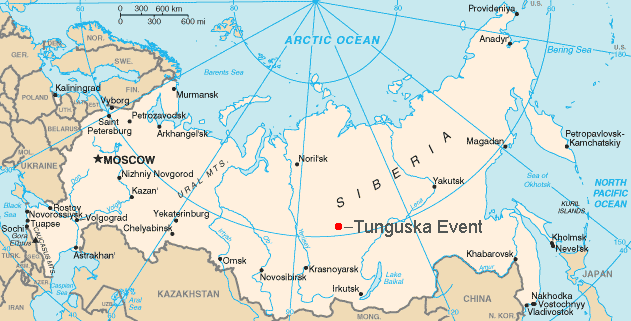Via Wikipedia-
The Tunguska Event, or Tunguska explosion, was a massive explosion that occurred near the Podkamennaya (Lower Stony) Tunguska River in what is now Krasnoyarsk Krai of Russia, at around 7:14 a.m.[1] (0:14 UT, 7:02 a.m. local solar time[2]) on June 30, 1908 (June 17 in the Julian calendar, in use locally at the time).[2]
The explosion was most likely caused by the air burst of a large meteoroid or comet fragment at an altitude of 5–10 kilometres (3–6 miles) above Earth's surface. Different studies have yielded varying estimates for the object's size, with general agreement that it was a few tens of metres across.[3]
The Tunguska event is believed to be the largest impact event on land in Earth's recent history;[8] impacts of similar size in remote ocean areas would have gone unnoticed before the advent of global satellite monitoring in the 1960s and 1970s.
(Damage from the impact)
This particular anniversary at the very least would have been much more somber day had the impact occurred several hours earlier. As you can see from this picture, St. Petersburg lines up relatively close to the center of the impact on latitudinal lines.

I think it's safe to say that if this impact happened in a major urban area like St. Petersburg which it very well could have done, our priorities today in terms of space exploration and human survival in general would be very different.
There are positive signs from Congress that NASA has been given the ok to start projects that are primarily designed to resolve the logistics behind altering the course of a potentially devastating earth impact. Let's hope this continues.
Happy "Thank God A Million People Didn't Die In One Impact" Day!







